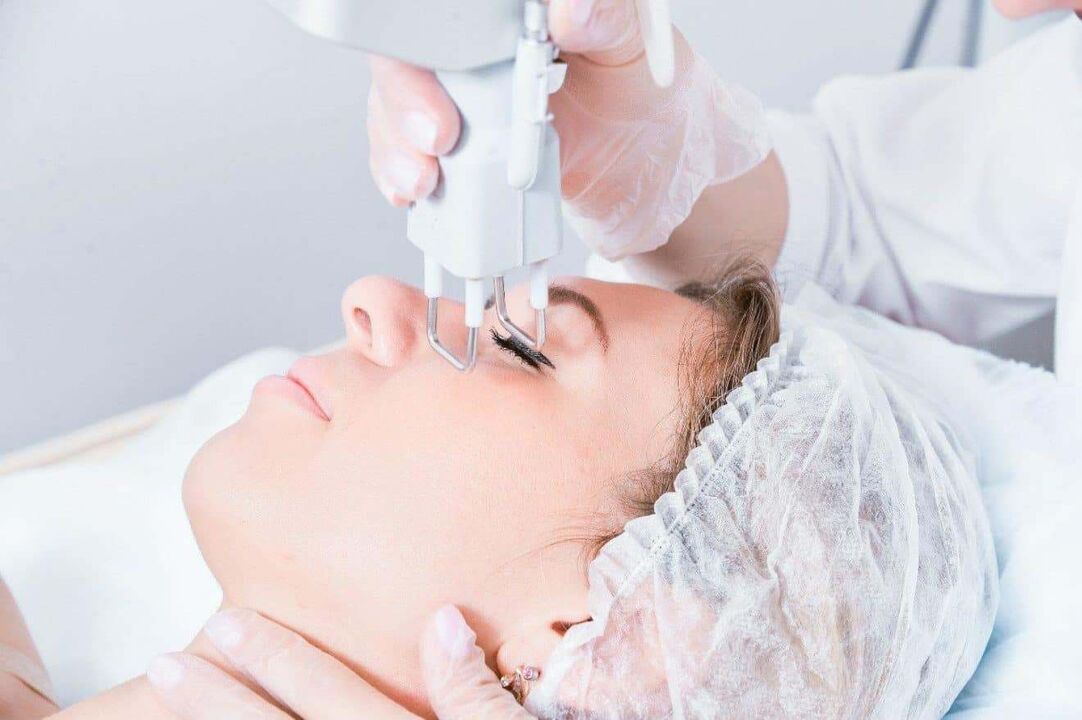
What is laser fractional photothermal effect?
Types of lattice photothermolysis
Non-ablative fractional laser skin rejuvenation
- Acne treatment works in just 4 sessions, with improvement over the next 24 months;
- When it comes to getting rid of stretch marks, it’s not just the actual stretch marksStretch marks become less noticeable or disappear completely, but the surrounding skin becomes firm and elastic after 1-2 months;
- Wrinkles disappear after 5 treatments, and the smoothing effect of deep wrinkles will appear within 3 months after the course.
Ablative lattice photothermal effect
CO2 laser method
point method
Indications for fractional laser skin rejuvenation
- copper poisoning– Spider veins, spider veins, which begin to appear after the age of 35 and are related to age-related changes in the body rather than to vascular disease;
- sagging skin- Significant sagging, "slipping" of the face, formation of a chin;
- wrinkle– Small facial expressions, including "crow's feet" (outer corners of the eyes), deep folds and folds (nasolabial folds), muslin around the mouth;
- Excessive sebum secretion– May be related to oily skin type, hormonal imbalance;
- enlarged pores– Visually recognized, regularly clogged with sebum and causing the appearance of massive acne;
- Presence of hyperpigmentation– regardless of its origin (genetic predisposition, impaired melanin production, skin aging);
- Whether there are scars, scars, stretch marks, acne marks– It doesn’t matter how long ago they were established;
- skin color changes– There is no natural blush, the tone becomes dull, grey, yellow.
Contraindications of rejuvenation surgery
- NeuropathologyWith convulsive syndromes (epilepsy of any origin and of any severity);
- autoimmune diseaseOccurs at any stage;
- diabetes, regardless of its type, severity and existing complications;
- tumor pathology– Malignant tumors can be located in any organ;
- chronic medical diseasePeople in the decompensation stage;
- Tendency to form keloids;
- HIV and hepatitis B and C;
- psoriasis;
- Warts, multiple papillomas, large warts in areas exposed to laser beams.
- Long-term use of antibiotics and hormonal drugs;
- Increased body temperature;
- menstruation;
- during pregnancy and breastfeeding;
- The infectious process is limited to the facial area;
- Focal inflammation of the skin in the area where surgery is planned.
Program preparation
- Stop taking fluoroquinolones, sulfonamides, and tetracyclines(Always consult your doctor! );
- Do not go to a solarium, sunbathe in the sun, or have chemical peels within 10 days before your appointment.;
- Do not take baths, saunas or hot baths 3 days before treatment, Refuse to use cosmetics containing alcohol;
- Avoid smoking, alcoholic beverages, strong coffee and tea, and physical activity 24 hours before surgery.and.
Facial photothermal therapy
- skin cleansingResidues, dust, dirt and sebum secretions from decorative and skin care cosmetics. For this purpose, doctors use ethanol-free professional cosmetics.
- Apply numbing gel to skin– Absorbed within 3-5 minutes. Anesthesia is performed at the patient's request and depends on the epidermal sensitivity level and pain threshold.
- Treat the skin with special ointments, which is conducive to the sliding of the nozzle. It does not contain dyes, fragrances, fragrances or any other substances that may cause allergic reactions.
- Use selected attachments– The patient will not feel significant pain and may experience mild discomfort. During the procedure, the face is exposed to a stream of cool air, significantly reducing the severity of discomfort.
Program results
- Uniform skin color;
- Pigmented spots become less noticeable or disappear completely;
- Increase skin firmness and elasticity– Sensation when touched;
- Facial contours become even– "Nodules", "pits" and "grooves" disappear.
How many courses of treatment are needed to achieve the effect of rejuvenation?
Postoperative care and recovery
- Do not heat your face for the first week.. You need to give up hot baths, bathhouses and saunas and go to hot baths instead. Nowadays you can only wash your face with room temperature water, but it is better to abandon this method of cleaning the dermis and use gentle supplements.
- Do not go to a solarium for a month and a half and do not expose your facial skin to ultraviolet rays (sunlight). When going out, be sure to apply sunscreen with a high SPF value to your face. This rule even applies to outdoor activities in cloudy weather—UV rays can penetrate dense clouds.
- Apply moisturizer to pre-cleansed facial skin at least 2-3 times a day for 10 days.. It is strictly forbidden to allow the epidermis to dry out as this can lead to increased peeling and severe irritation.
- Use a mask containing panthenol every day for 7 days.. This will help restore the epidermis quickly and avoid complications. If a patient is allergic to a given substance, the doctor will choose another product with the same properties.
- It is strictly prohibited to forcibly remove crusts! They have to exfoliate on their own, so you can't use a scrub (even the softest, gentlest scrub) to cleanse them for the first 2 weeks.
Side effects and complications
- redness and swelling of the skin– Considered to be the body’s normal response to heating of dermal cells, it disappears on its own on days 3-5 of the recovery period;
- Flaking and excessive dryness– This is how epidermal cells renew, so this process can be considered natural, and by performing skin care correctly (applying a generous amount of moisturizer every day) the condition can be alleviated and recovery accelerated;
- increased pigmentation– This is only possible if there is no UV protection during the recovery period (this also applies if the ban on visiting solariums is ignored);
- Inflammatory process in the superficial layers of the epidermis– Occurs when disinfection rules are violated or due to lack of proper cleaning during recovery.










